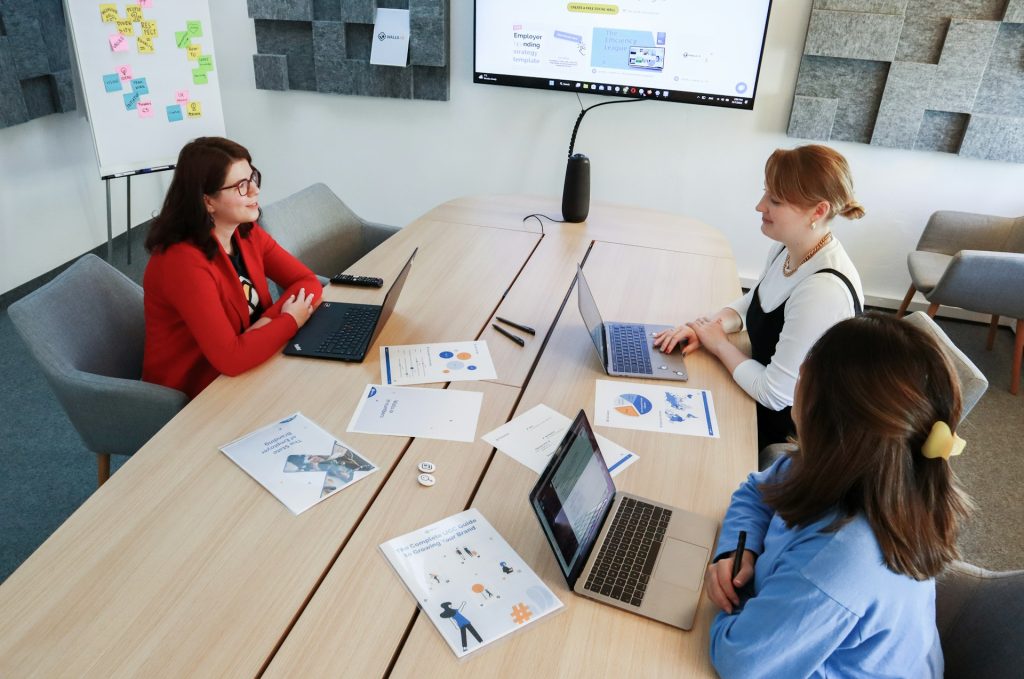Agile Project Management: Key Strategies for Success
“You’re in the middle of a project. The team’s on track, the timeline is tight but doable—and then everything changes. A new stakeholder joins. Priorities shift. Suddenly, what was important yesterday doesn’t even make the list today. Sound familiar? That’s exactly the kind of situation Agile was made for.”
These kinds of shifts aren’t the exception—they’re the norm. That’s why Agile project management has become more than a method. It’s a mindset, a way of working that embraces change rather than resisting it.
In today’s fast-paced and constantly shifting environment, adaptability is no longer a luxury, it’s a necessity. Agile project management, once the preserve of software teams, has grown into a widely adopted approach for handling complex, fast-moving work across many sectors.
Its core principles: iterative delivery, open collaboration, and responsiveness to change make it well suited to projects where requirements evolve, and stakeholder feedback is key. But simply “doing Agile” isn’t enough. It’s how you apply it that really matters.
Here are a few strategies drawn from real delivery experience at i3Works that can help make Agile more effective and sustainable.
1. Focus on Value — Not Just Activity
It’s all too easy to confuse being busy with being effective. Agile encourages us to focus on delivering value, not just ticking off tasks.
How to stay value-focused:
• Make sure user stories are tied to outcomes, not just functionality
• Keep checking in with stakeholders, are we still solving the right problem?
• Revisit and re-prioritise the backlog regularly
Agile ceremonies can help reinforce this, but they only work if you’re willing to challenge assumptions and course-correct when needed.
One practical tip is to revisit the definition of “done” with your team. Is something really finished when the code is written, or when it’s tested, reviewed, and actually delivering value to a user? Getting clear on this helps everyone stay focused on outcomes, not just output. And when feedback shows that something isn’t hitting the mark, it’s okay to pivot, that’s the whole point.
2. Adapt the Frameworks — Don’t Force Them
Scrum, Kanban, SAFe®… there are plenty of frameworks out there, and they all offer structure. But they are not rules, they are starting points. The most successful organisations adapt these models to fit their governance, team culture, and delivery challenges.
For instance:
• Scrum tends to work well for small, co-located teams with a clear output
• Kanban suits ongoing delivery or operational environments with steady workflow
• SAFe® is useful at scale, but it needs strong coordination and commitment
There is nothing wrong with blending approaches. The best Agile setups are the ones that evolve over time, based on real-world feedback, not theory.
In practice, most teams don’t fit neatly into a single framework and that is completely fine. You might start with Scrum and realise that some elements of Kanban make more sense for the kind of work you do. The important thing is to treat frameworks as tools, not templates. It’s okay to experiment, adapt, and even drop elements that aren’t working, as long as you’re doing it intentionally.

3. Build the Conditions for Autonomy
Agile thrives when teams are trusted to deliver. But autonomy isn’t about everyone doing their own thing, it’s about giving people the right conditions to make informed decisions and take ownership of their work.
That means:
• Being clear about roles and responsibilities
• Ensuring access to key decision-makers (like Product Owners)
• Aligning team goals with wider organisational priorities
When teams are trusted, supported, and given clarity, they don’t need to be micromanaged. They just need space to get the job done.
That sense of autonomy often starts with small things, like letting teams shape how they run their stand-ups, or how they visualise their work. It’s also about removing friction: making sure decisions aren’t delayed because no one knows who’s responsible, or because approval takes weeks. When those blockers are removed, teams naturally step up and take more ownership.
4. Don’t Skip the Reflection
One of the simplest but most powerful Agile practices is the retrospective. Carving out time to reflect helps teams learn, adjust, and improve with every sprint.
Good retrospectives:
• Are short, structured, and focused
• Encourage honesty – including around what isn’t working
• Lead to clear actions that feed into the next iteration
These regular moments of reflection are what drive long-term improvement, in both delivery and team culture.
Retros don’t have to be overly formal, what matters is creating a space where people feel safe being honest. Sometimes that means mixing up the format to keep things fresh or making time for quick wins as well as deeper discussions. What’s important is that the feedback loop is real, that people see their suggestions leading to action.

5. Start with the Mindset — Not the Meetings
It’s easy to get caught up in the ceremonies, daily stand-ups, sprint planning, backlogs and so on. But Agile isn’t just a set of processes. It’s a mindset.
At its heart, Agile is about valuing people over rigid procedures, staying open to change (even late in the day), and putting working outcomes ahead of lengthy documentation. If you jump straight to the tools without understanding the principles, you risk going through the motions without seeing the benefits.
Before doing anything else, take time as a team to explore what Agile means in your context and how it can support better ways of working.
A good place to start is simply asking your team what Agile values mean to them in practice. What does “collaboration” really look like for your group? What would “responding to change” mean in the middle of a tight deadline? These kinds of conversations help set expectations early on and can reveal assumptions that might otherwise go unnoticed.
Final Thought
Agile isn’t a quick fix or a guaranteed success formula, but it is a practical, proven approach to handling complex work in a changing world. It’s most effective when it’s adapted thoughtfully, centred around people, and underpinned by continuous learning.
When teams trust each other, stay curious, and keep improving, Agile becomes more than a framework. It becomes a mindset for building resilience, collaboration, and real-world results.
There’s no “perfect” Agile setup. What works for one team might not suit another, and that’s okay. The key is to keep learning, stay open to feedback, and view the process as something you refine over time, not something you have to get right on day one.
To recap, these are the 5 strategies I’d suggest:
- Focus on value, not just activity.
- Adapt frameworks to fit your team.
- Create the conditions for autonomy.
- Reflect regularly and learn.
- Lead with mindset, not meetings.
“How has your team adapted Agile to meet its own challenges? I’d love to hear what’s worked and what hasn’t in your context.”



